US-VN History
Examining the “historical evidence” for China’s sovereignty over the South China Sea islands (Part 1)
Published on

Phan Van Song, Nguyen Trinh Don, Nguyen Luong Hai Khoi
Examining the “historical evidence” for China’s sovereignty over the South China Sea islands (Part 1: “China was the first to discover and name the Nánshā Islands”)
Like a mantra, the statement that China “has indisputable sovereignty over the islands in the South China Sea and the adjacent waters… and China has solid and ample historical evidence to support this” is almost always used when China justifies its aggressive actions or protests actions from other claimants in the South China Sea. This claim usually does not come with any evidence to back it up except in a few occasions such as when China’s Ministry of Foreign Affairs (CMOFA) released its statements on the South China Sea issues in 1980, 1988, 2000, 2011, 2015, and 2016. Of these, the 2000 statement provided quite detailed arguments[1]; and although it addressed specifically the claim over the Spratly Islands, most of its arguments have also been used elsewhere for China’s claim over the whole South China Sea. The document presented three major arguments: (1) China was the first to discover and name the Spratly (“Nánshā”) Islands; (2) China was the first to develop the Nánshā Islands; and (3) China was the first to exercise jurisdiction over the Nánshā Islands. Following these typical lines of arguments for China’s claims, this paper attempts to examine the asserted solidity and amplitude of the ‘historical evidence’ provided for such claims.
Before addressing the above question, it is worth noting that some pieces of the “historical evidence” put forward by CMOFA are dated back as early as more than 2,000 years ago, when the ancient mindset of Sinocentrism was dominant in what is now known as China. According to China’s traditional perception, it is the center of the world (the name “China” in Chinese literally means “Central State” or “Middle Kingdom” (中国, Zhōngguó)), and only the Chinese people are regarded as civilized while those outside of China are barbaric.
Although the word yí (夷 barbarians) was used generally in a pejorative manner to indicate the peoples living beyond Chinese frontiers, China also used more specific terms to indicate the locations of these “barbarians”. [2] These included dōng yí (東夷 eastern barbarians), nán mán (南蛮 southern barbarians), běi dí (北狄 northern barbarians), and xī róng (襾戎 western barbarians) or simply yí, mán, dí and róng (in known context) for those in the east, south, north, and west of China, respectively [3]. Most of these nations were under direct rule or had tributary relations with China at some points in their history; some became parts of China as it is today while others such as Japan, Korea, and Viet Nam became independent nation states. An understanding of this “ancient” mindset will be helpful as we examine the following arguments.
China cites numerous ancient books and maps to back up its claim.
1. The first key source is Yìwù Zhì (异物志, “Book of Strange Things” or “Record of Foreign Matters”) by Yáng Fú (杨孚) of the East Han Dynasty (23–220 CE).
The word yì (异) literally means “different/strange/unusual”, wù (物) “matter/object/thing”, and zhì (志) “records/account”. It is worth noting that the book was later edited by many generations and the original version no longer exists [4]. It is also known as Jiāozhōu Yìwù Zhì (交州异物志) or Jiāozhǐ Yìwù Zhì (交趾異物志) because it mainly discusses “strange things” in Jiāozhōu/Jiāo zhǐ (交洲/交趾, ancient names of Viet Nam),[5] and this name helps to distinguish it from over twenty other “Yìwù Zhì” books such as Nánzhōu Yìwù Zhì (南州异物志) by Wàn Zhèn (万震) of the Wú (吳) Kingdom (222–280 CE) dedicated to Nánzhōu (south of what is now known as Pearl River Delta), and Fúnán Yìwù Zhì (扶南异物志) by Zhū Yìng (朱应) also of the Wú Kingdom to Fúnán (Chinese name for a historical realm that covered modern Cambodia, southern Viet Nam, and southern Thailand). In this context, the quote from this book that CMOFA used to support China’s claim of discovery and sovereignty of South China Sea islands
“Zhănghăi qítóu, shuǐ qiăn ér duō císhí” (涨海崎头, 水浅而多磁石)
([There are] ridge heads in the rising sea, the water is shallow but [filled with] a lot of magnetic rocks/stones) there)
can hardly be understood as such; if anything, it appears to be a mere description of something “strange” (magnetic rocks in this case) in the rising sea (zhănghăi), possibly Jiāozhōu Sea as reflected by the book title. However, in its statement in English, by capitalizing the two words ‘zhănghăi’ and ‘qítóu’ in the quote, CMOFA interpreted that “Zhănghăi” (涨海, Rising Sea) was used to refer to the South China Sea, and “Qítóu” (崎头, Ridge Heads) to all the islands, reefs, shoals, and isles within, including the Paracel and Spratly Islands.
The interpretation of zhănghăi as the South China Sea is unconvincing, as it was more likely used to indicate Jiāozhōu Sea as discussed above rather than the whole South China Sea. The understanding that zhănghăi is Jiāozhōu Sea is also consistent with the fact that zhănghăi was identified as Qióngzhōu Sea – a term in Qióngzhōu Fǔ Zhì (琼州府志) describing the seas off of Guǎngdōng, around Hǎinán Island, and the Gulf of Tonkin.[6] This identification also agrees with the narrow meaning of zhănghăi as Roderich Ptak has pointed out some time ago in this context, although in general zhănghăi is not necessarily a reference to a concrete maritime area, but a vague designation for an undefined maritime area.[7] Therefore, zhănghăi in this case could not contain both the Paracel and the Spratly Islands. From there it follows that “Qítóu” cannot be interpreted as an indication for all geological features in the South China Sea, let alone the fact that it is inconceivable to use a single word as such to be the common name for all islands, reefs, shoals, and isles. Also, there is no evidence that all or at least a majority of the features in the South China Sea are covered with “magnetic rocks” as CMOFA’s interpretation of the quote implies. In fact, geological studies in the South China Sea only found magnetic anomalies in limited areas, and most of the navigation hazards are coral heads or normal rocks and sands.
It is also worth noting that if the quote were extended to include the whole description as follows:
Zhǎnghǎi qítóu, shuǐ qiǎn ér duō císhí, jiǎowài rén chéng dà bó, jiē yǐ tiě gù zhī, zhìcǐ guān, yǐ císhí bùdéguò 涨海崎头,水浅而多磁石,徼外人乘大舶,皆以铁锢之,至此关,以磁石不得过
(In zhǎnghǎi qítóu, the water is shallow and there are many magnetic rocks. Foreigners (jiǎowài rén 獥外人) take big boats all covered with iron; when reached the area, they cannot proceed further due to the magnet[ic stones]),
strange details of these císhí (magnetic rocks) would be more obvious. Furthermore, even if these evidently fictional details were ignored and CFMO’s interpretation of locations were true then the claim that “China was the first to discover and name the South China Sea Islands” would apparently be more unfounded: the people who had sailed the sea here were not Chinese but foreigners and the boats (bó 舶) they used were possibly of Southeast Asian origin.[8]
In short, this quote and the whole Yìwù Zhì cannot be used as a historical source to back up China’s argument.
2. The second cited book is Fúnán Zhuàn (扶南传, Accounts of Funan) by Kāng Tài (康泰), a high-ranking official titled Zhōngláng (中郎: gentleman of the household) [9] of the Wú Kingdom.
In 226 CE, Kāng Tài and another official named Zhū Yìng (朱应) were sent on a diplomatic mission by Sūn Quán (孫權), King of Wú, to Fúnán via the South China Sea. Upon his return, Kāng Tài wrote Fúnán Zhuàn.
Despite the fact that this book is not an official report but a zhuàn (传, biography/narrative/tale/account) and that it has long been lost, it is often quoted to support China’s claims [10]. It is quite certain that the book content was about what Kāng had personally experienced and more or less what he had heard from the locals during his mission without additional evidence or witness to back them up. This book, therefore, in no reasonable way describes something belonging to China.
It is also worth noting that, during that time and even many centuries later, China had no notable sea-bound ships but only riverine boats, and that the maritime trade of the South China Sea was mainly conducted by the Arab, South East Asian and South Asian people.[11] As a result, the two Chinese monks Fǎxiǎn (c.5) and Yìjìng (end c.7), traveling hundreds of years after Kāng and Zhū’s trip, had to board foreign merchant boats for their pilgrim journey through the South China Sea. Under these circumstances, one can ascertain that Kāng and Zhū had to do the same. And obviously, these particular passengers could not have more knowledge of the sea than the merchants or the boat crews who had been frequenting it for their trade. Therefore, it is quite absurd that China regards Fúnán Zhuàn as a ‘sound’ evidence to claim that it (represented by Kāng’s diplomatic envoy) was the first to discover the Paracels and the Spratlys.
3. The third cited source is Dǎoyí Zhìluè (岛夷志略, Brief Records of the Barbarians of the Isles) by Wāng Dàyuān (汪大渊), a Chinese traveler (not a [prominent] navigator as claimed by CMOFA) during the Yuán Dynasty (1280–1365).
The book covers over a hundred places in South Asia, Southeast Asia, and Africa. Any description in the book such as weather, climate, and geography should be essentially associated with the “barbarians of the isles” (dǎo yí) and not the Chinese as the title indicated
In the title of the book, dăo (岛) means “isle/island”, yí (夷) “western barbarians” and possibly “barbarians” in general as discussed above, zhì (志) “records/account”, and luè (略) “abridged/outline/summary”. It should, therefore, be translated as suggested here. The CMOFA’s translation of the title into English as “Abridged Records of Islands and Barbarians” (emphasis added) is thus ambiguous as it may mislead the readers to think that the book is about particular isles and the barbarians in general despite the fact that it is all about the barbarians of the isles. The book also includes some details that are biased and inconsistent with history. Furthermore, similar to Kāng and Zhū, Wāng was only a traveler onboard merchant ships [12]. Under such context, it is doubtful that the book supports China’s claim to be the first to discover the islands in any meaningful ways
4. The first of the two “maps” that CMOFA uses for its arguments on the South China Sea is Húnyī Jiānglǐ Lìdài Guódū Zhītú (混一疆理歷代國都之圖, Map of Integrated Lands and Regions of Historical Countries and Capitals). CMOFA translates the name of this map into English as “Consolidated Map of Territories, Geography, and Capitals of Past Dynasties”, and states that it was published under the Míng Dynasty.
Although the map indeed came into being during the Míng Dynasty (1368–1644), it was a world map compiled in 1402 by the Korean officials named Kim Sa-hyeong (金士衡, referred to by the Chinese as Jīn Shìhéng), Yi Mu (李茂, Lǐ Mào), and Yi Hoe (李薈, Lǐ Huì), with the introduction written by another Korean named Gwon Geun (權近, Quán Jìn). Only two known copies of this map are preserved today. They are both in Japan, and were shown to have been “modified”. [13]
It should be emphasized that during that period, states with tributary relationships with China such as Viet Nam, Korea, Japan, and some others in Southeast Asia [14] considered China as a factor of guarantee of peace, investiture, and trading opportunities [15]. Within this complex Sinocentric network, countries could get information from each other by exchanging envoys [16]. Míng’s tributary states used Chinese characters (漢字) as their written languages then. Under these circumstances, it is almost impossible to ascertain that simply because there were Chinese words like “shítáng” (石塘) and “chángshā” (長沙) on a Sinocentric world map, China would therefore be considered as the first to name and discover the Paracels (= Shítáng) and the Spratlys (= Chángshā).
5. The second “map” is Gèng Bù Lù (更路簿, The Road Book), translated into English as “The Road Map”, claimed to be “of the Qīng Dynasty” and mark “the specific locations of all the islands, reefs, shoals, and isles of the Nánshā Islands” by CMOFA. [17]
The CMOFA’s title translation and description of the book are problematic as it may mislead the readers to mistakenly perceive that Gèng Bù Lù was an official map produced during the Qīng Dynasty. In contrast, it is actually a kind of common route guide book (rutter) that had been written or passed down via word-of-mouth for generations among fishermen in Hăinán based on their own experience [18]. The time it was first compiled thus cannot be verified, and only copies of the manuscript with varying contents have been found recently. In fact, there is evidence that the written version “has a rather short history, having been laid down in writing only in the early 20th century”.[19] Therefore, Gèng Bù Lù provides a very feeble foundation, if any, upon which CMOFA asserts China’s claims due to its evidently unofficial and unoriginal nature. Furthermore, the Chinese fishermen as individuals could not represent the Chinese State in discovering these islands according to international law and practices.
Notes
[1] See Ministry of Foreign Affairs, the People’s Republic of China, “Historical Evidence To Support China’s Sovereignty over Nansha Islands”, November 17, 2000 (English) [or Google Cached version] and Chinese version: 中国对南沙群岛拥有主权的历史依据
[2] A Chinese character is often composed of a “radical” element indicating meaning and a “phonetic” element suggesting pronunciation. Several pejorative character exonyms were written with the “dog/beast” radical 犬 or 犭, such as dí (狄, “northern barbarians”) with a dog 犭radical and a huŏ 火 phonetic, and mán (蠻, “southern barbarians”) with an insect 虫 radical and a luan 䜌 phonetic.
[3] See Creel, Herrlee G, The Origins of Statecraft in China, The University of Chicago Press, 1970 (“The Barbarians” chapter, pp. 194–241); Li Zhaojie, Li James, Traditional Chinese World Order, Chinese Journal of International Law, Volume 1, Issue 1, 1 January 2002, Pages 20–58
[4] 异物志 (Yìwù Zhì: Record of Foreign Matters) was written in the 3rd century, cited by The Book of Suí《隋书》(639 AD) and the New Book of Táng《新唐书》(11th century). It was lost during the Sòng Dynasty (960–1279) although it was still cited by many later books. In 1849, Zēng Zhāo (曾钊) produced a new version of the book from ancient textual sources. This 1849 collated and adapted version was reprinted in 1947 by The Commercial Press in Shanghai (商务印书馆出版). That means the version which China is using for its sovereignty claims is the secondary version conjured up in the early modern era.
[5] 吴永章 Wú Yǒngzhāng,《异物志辑佚校注》(Compilation and Commentary on the Yìwù Zhì) (in Chinese), 广东人民出版社 Guangdong Publishing Group, 1991 (See 《异物志前言》)
[6] see Phạm Hoàng Quân, Những ghi chép liên quan đến biển Đông Việt Nam trong phương chí Trung Hoa (Records of the East Viet Nam Sea in China’s local gazetteers), Journal of Thoi Dai Moi, Vol 22, August 2011 (Available here)
[7] Ptak, Roderich. 2004. Zhanghai. Raum und Konzept: Von den Anfängen bis zur Tang-Zeit, in:
Müller, Höllmann, and Gui 2004, 241-253
[8] Boats of Chinese origin are usually written as chuán (船). It is interesting to note that Jianming Shen, a Chinese scholar, was even more audacious in presenting the full quote but changing bó (舶) into chuán (船), swapping the order of these two characters jiǎowài (徼外: beyond the borders) into wàijiǎo (徼外: patrolling the border). “He thus turned a potentially foreign vessel into a Chinese vessel, transforming an observation made by alien sailors into one made by Chinese sailors. Hence Shen modified the text to describe a Chinese setting in which Chinese officials inspected a maritime area controlled by China, and did away with the original meaning in which possibly Southeast Asian mariners sailed on an open ocean.” See Johannes L. Kurtz, The South China Sea and How It Turned into “Historically” Chinese Territory in 1975, (In book: China and the World – the World and China: A Transcultural Perspective, vol. 3, Publisher: Ostasien Verlag, 2019, pp. 133-160. Available here).
[9] As a Zhōngláng (guards / attendants in the royal palace… ), Kāng Tài was unlikely a famous navigator as CMOFA claimed, possibly to impress readers.
[10] See Charles Willemen: Buddhism’s Maritime Route to China, Belgium Royal Academy of Sciences, March 29, 2009 (Available here)
[11] Shaffer, Lynda Norene (1996). Maritime Southeast Asia to 1500. M.E. Sharpe
[12] 蘇繼廎, 汪大淵. 島夷誌略校釋. 中華書局 Zhonghua Book Company, 1981; 黃省曾, 西洋朝貢典錄校注東西洋考(繁體版), 中華書局 Zhonghua Book Company, 2000; See Zhōngguó Dà Băikē Quánshū (中國大百科全書 the Encyclopedia of China)
[13] Aoyama Sadao 青山定雄: Ri chō ni okeru ni san no Chōsen zenzu ni tsuite 李朝に於ける二三の朝鮮全圖について, Tōhō Gakuhō 東方學報, No. 9, pp. 143–171, 1939
[14] Lockard, Craig A, Societies, Networks, and Transitions: A Global History: To 1500, Cengage Learning, 2007 p. 315
[15] Lee, Ji-Young, China’s Hegemony: Four Hundred Years of East Asian Domination, Columbia University Press, 2017, p 9.
[16] An illustrative example of possible knowledge exchanges among Southeast and East Asian countries is the flee of the Viet Nam’s prince Lí Long Tường (李龍祥, known in Korea as 이용상/ Yi Yong-sang) to Korea. In 1226, Prince Lí Long Tường , naval admiral and member of the imperial family of Viet Nam’s Lí Dynasty (1009–1225) together with 6,000 family members and subordinates fled to Korea by ships to avoid prosecutioned by the new Trần Dynasty. He later became a Korean general known as Hwasan Sanggun (華山將軍, General of Hwasan), and started a lineage of the Lee (or Rhee) family in both South and North Korea today. (See: Phillip Taylor, Modernity and Re-Enchantment: Religion in Post-Revolutionary Vietnam Institute of Southeast Asian Studies, 2007, p. 80; and also see: Ch’oe Sang-su, Exile and Naturalization of Annamese Prince Ly, Korea Journal June 1, 1969, pp.16~18) This strongly suggests that Viet Nam and Korea had already known the geography of each other and that these Korean cartographers might have benefited from the knowledge.
[17] Gèng Bù Lù was later translated more accurately as Book on Voyage Routes when used to support China’s sovereignty claim over the Scarborough Shoal. See Embassy of the People’s Republic of China in the Republic of the Philippines
[18] See Xinhua《耕海:海南渔民与更路簿的故事》举行新书推介 (“Growing the Sea: The Story of Hainan Fishermen and Genglubo” New Book Promotion)
[19] Johannes L. Kurz, Gauging the South China Sea: Route Books (genglubu) since 1974 (Available here)
Related articles
Examining the “historical evidence” for China’s sovereignty over the South China Sea islands (Part 1: “China was the first to discover and name the Nánshā Islands”)
Examining the “historical evidence” for China’s sovereignty over the South China Sea islands (Part 2: Chinese official maps and historical/geographical books against China’s claim in the South China Sea)
Examining the “historical evidence” for China’s sovereignty over the South China Sea islands (Part 3: “China was the first to have development activities on the Nánshā Islands”)
Examining the “historical evidence” for China’s sovereignty over the South China Sea islands (Part 4: “China was the first to exercise jurisdiction over the Nánshā Islands”)
You may like
-


Tuong Vu on Vietnam’s Disputes with China, Relationship with Washington, and Political Involution
-


The Limit to U.S.-Vietnam Security Cooperation
-
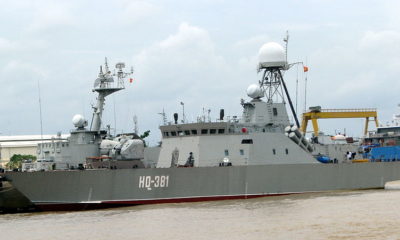

Time for Vietnam to Reassess its South China Sea Strategy
-
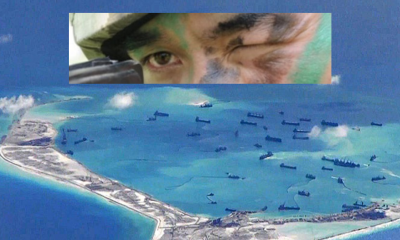

Did the 2016 Permanent Court of Arbitration make China more aggressive in the South China Sea?
-
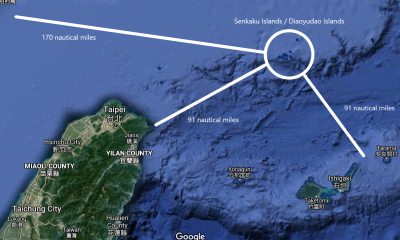

China Adopts South China Sea Tactics in the East China Sea
-
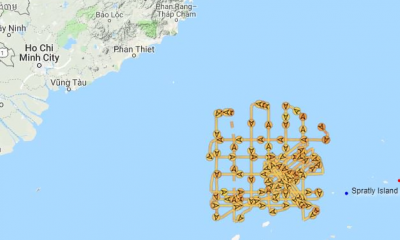

China’s Campaign to intrude into the Continental Shelves and EEZs of Southeast Asian Countries in 2019 (Part 3: Legal Aspects of the Campaign)

Reflections on New Era of National Rise by Vietnam General Secretary Tô Lâm

Of Space & Place: On the Nationalism(s) of Tuan Andrew Nguyen’s “Our Ghosts Live in the Future”

Postwar Music In Vietnam And The Diaspora

Translation: The Decision in 2013 of the Central Committee of the Communist Party of China on Certain Major Issues Concerning Comprehensively Deepening Reform

Thủ Đức Demonstration High School: A Modern Educational Policy and Teaching Method of the Republic of Vietnam

Vietnam’s unresolved leadership question

Rethinking History and News Media in South Vietnam

“The Vietnam War Was an Unwinnable War”: On Factuality and Orthodoxy

Democracy in action: The 1970 Senatorial elections in the Republic of Vietnam (Part 1)

Pandemics and Morality: Lessons from Hanoi
US-VIETNAM REVIEW
-
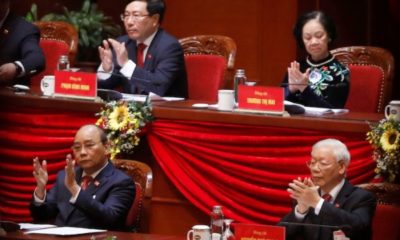
 Politics & Economy4 years ago
Politics & Economy4 years agoVietnam’s unresolved leadership question
-

 Politics & Economy2 years ago
Politics & Economy2 years agoRethinking History and News Media in South Vietnam
-

 After 19751 year ago
After 19751 year ago“The Vietnam War Was an Unwinnable War”: On Factuality and Orthodoxy
-

 ARCHIVES5 years ago
ARCHIVES5 years agoDemocracy in action: The 1970 Senatorial elections in the Republic of Vietnam (Part 1)
-

 Society & Culture5 years ago
Society & Culture5 years agoPandemics and Morality: Lessons from Hanoi
-

 Politics & Economy4 years ago
Politics & Economy4 years agoThe Limit to U.S.-Vietnam Security Cooperation
-

 Politics & Economy5 years ago
Politics & Economy5 years agoNational Shame: How We (Americans) can learn from Nguyễn An Ninh
-

 Vietnamese-America4 years ago
Vietnamese-America4 years agoDeporting Vietnamese Refugees: Politics and Policy from Bush to Biden (Part 1)


